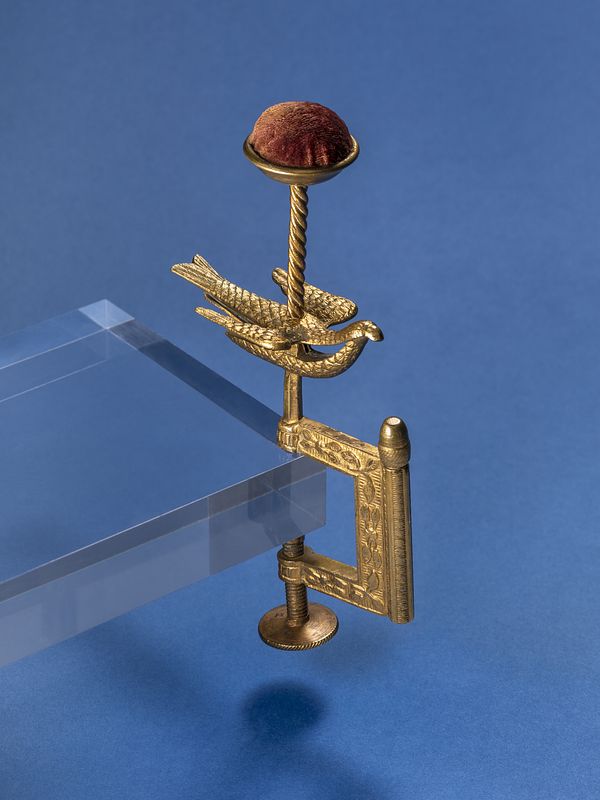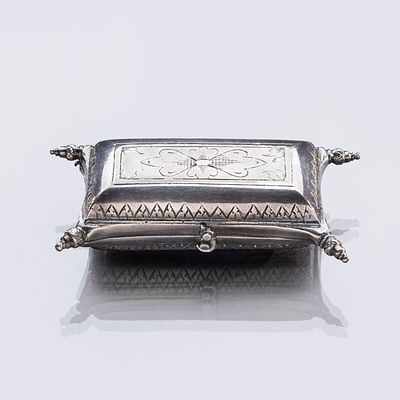Thirdhand “sewing bird,” probably from England, mid-1850s
Sewing bird


Details
- Title: Thirdhand “sewing bird,” probably from England, mid-1850s
- Object Type: Sewing clamp
- Dating: Mitte 1850er-Jahre
- Material: Velvet, Steel, Gilt brass
- Technique: Gilded
- Height, width: 14.0 cm, 3.4 cm
- Acquisition Date: 2018
- Inventory number: 125113
- Permalink: https://www.draiflessen.com/items/129
Exhibitions

ARIADNE’S NAAIKUSSEN
15.10.2023 – 28.04.2024
Description
Starting in England in the mid-nineteenth century, these sewing clamps were affectionately referred to as “sewing birds.” The multipart utensil can be attached to a tabletop using the long screw. By pressing on the tail feathers, the bird’s beak opens via a steel spring. The seamstress clamped a piece of the fabric into the beak and held another in her hand to ensure optimum tension. With her second hand, she guided the needle and thread. The utensil was thus a practical sewing aid that replaced a third hand—a fact that also led to the overarching term for these devices as “third hands.” In addition to the clamp, our sewing bird has a pincushion mounted high above it and a needle bush that can be opened with an acorn-shaped screw, which is attached to the vertical part of the clamp that connects the straight jaws. From the middle of the nineteenth century onward, thousands of sewing clamps—also with other animals, especially dolphins, and sometimes with opulent ornamentation—were machine-made in a wide variety of metals in Europe and the United States and offered for sale in merchandise catalogs. Some, like this sewing bird, are fire-gilded, a technique known as ormolu.